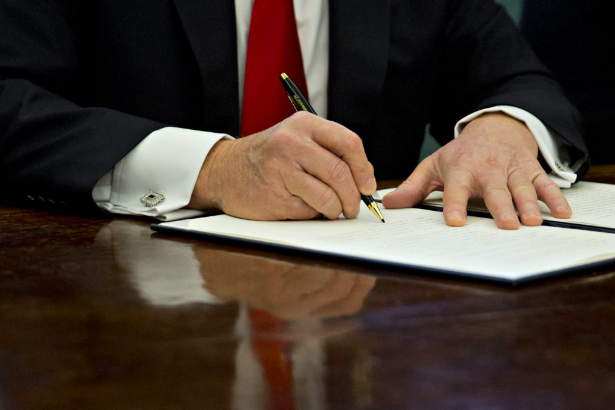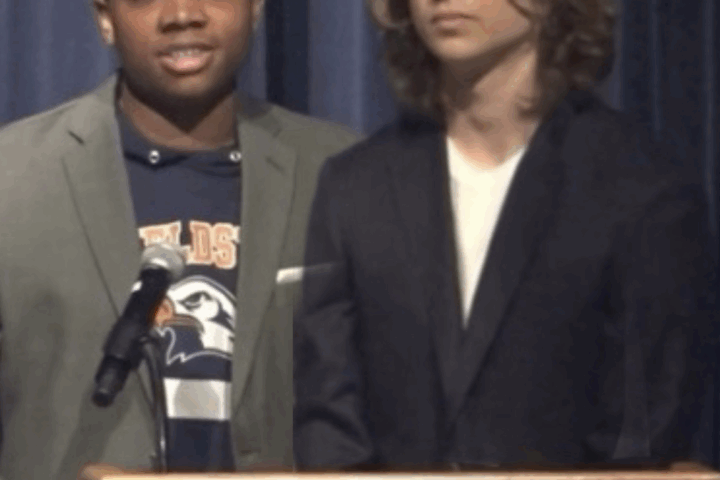The executive branch of the United States Federal Government was allotted a certain amount of authority and a distinct role by the Framers of the Constitution as one part of a complex system of checks and balances. However, this section of our government has grown to be far more powerful than what was originally intended, shifting the national power balance in the process.
The main way that the president and thus the whole executive branch has been able to expand the amount of power they exercise has been through executive orders. An executive order is a directive issued by the president to a federal agency or agencies that (nowadays) acts similarly to a law, basically allowing the president to carry out policy changes without congressional approval. The Constitution does not give explicit powers to the president to carry out executive orders, but every president except for William Henry Harrison (who was only in office for a month) has issued an executive order of some form. The (indirect) constitutional basis for executive orders lies in two clauses of Article II of the Constitution; one states that the president “shall take care that the laws be faithfully executed” and the other reads, “the executive power shall be vested in the president.” As long as an executive order is based upon either powers given to the president by the Constitution or powers given to the president from laws made by Congress, it has the same force as a law. However, executive orders cannot spend money, as this power is exclusively given to Congress. Once a president has issued an executive order, it is documented in the Federal Registrar and is enforced by the same types of measures that a law would be.
The first executive order in American history was issued by George Washington only two months into his presidency, and it requested from the leaders of federal departments a “full, precise, and distinct general idea of the affairs of the United States.” Washington also made an executive order proclaiming American neutrality on the global stage; one which James Madison, often referred to as the “Father of the Constitution,” disapproved of and thought of as an overextension of the president’s power. In total, Washington made eight executive orders during his tenure as president, an average of just one per year, setting somewhat of a precedent about executive orders regarding both the content and quantity of those that he issued, a precedent which has not lasted until today. In the early years of this nation’s existence, right after the Constitution’s ratification, congressional approval was seen as absolutely necessary for not just declaring war, but also for engaging in minor conflicts. Somewhat insignificant squabbles like the Quasi-War with France in 1798 or skirmishes with Native Americans on the frontier required approval by Congress. This is because Article 1 Section 8 gives Congress the power to declare war, and the vast majority of interpretations of the Constitution, including those from Washington, Hamilton, Madison, and other Founding Fathers recognize that this clause is also a limit on executive power, holding that the power to declare war is exclusively that of Congress. Executive orders played a rather insignificant role in American government up until the Civil War, where Lincoln issued two famous ones: the Emancipation Proclamation and the suspension of Habeas Corpus. Other significant executive orders have been the Manhattan Project, the desegregation of the American armed forces, the establishment of the Peace Corps and the mobilization of troops to help desegregate schools in Little Rock, Arkansas. While these former executive orders were extremely significant in the growth of the United States as a nation, some executive orders have been rather controversial, like the internment of Japanese-Americans during WW2 by FDR and the seizure of American steel mills during the Korean War by Truman. Franklin Roosevelt issued the most executive orders of any president, both on a total and per-year basis, coming in at 3,721 which is 307 per year that he was in office, almost once a day.
In recent years, presidents continue to use executive orders in ways that the Framers would not likely approve of. For example, Reagan ordered soldiers into Libya, Lebanon, Grenada and more with executive orders. George H.W. Bush also utilized executive orders to invade Panama, toppling the government there, and Obama ordered airstrikes to help support the ousting of Muammar Gaddafi in Libya. In 2020, Trump authorized a strike on a top Iranian general, Qassem Soleimani, after Iran shot down an American drone. This action was without congressional approval and could have easily brought Iran to declare war on the United States, a declaration which Congress would then be forced to reciprocate (though thankfully it never came to this). President Biden recently issued an executive order attempting a forgiveness of a wide range of student loans. This action was expected to cost the United States hundreds of billions of dollars, an amount that would be spent without any sort of congressional approval. However, the president cannot spend this amount of money through an executive order, so this was paused temporarily by the court system.
Regarding the expansion of executive power in the U.S. government, Dr. Banks, an expert on American history and a history teacher at Fieldston Upper, said she was “confident” that the Framers of the Constitution would not be happy with the mass of power held by the president today. She also stated that a president gaining too much power was “one of their [the Framers] main concerns and the power of the executive has certainly increased dramatically.” She also imagines that if they could see the state of executive orders today, the Framers would “condemn the use” of them.
It is evident by the number of executive orders and by the actions being taken using them that presidents today have far more power than was ever intended by the Framers. These law-like presidential commands have become a commonplace measure for getting around the struggles that come with acquiring congressional approval. However, getting stuff done in democracy sometimes isn’t easy, and it forces us to make compromises, but that is the whole point, and that is why executive orders have really become a way of going around the will of the people.







Excellent Analysis. Thank you
W take